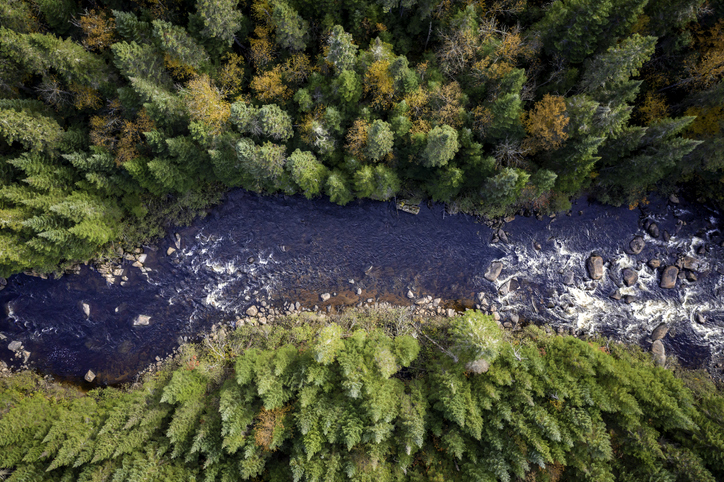Indigenous Peoples Will Continue to Shape the Future of Canada

Indigenous peoples have shaped many critical moments of this country’s history. That history begins with nation-to-nation Treaties which are a foundational element of our constitutional landscape.
In the early 1980’s, Brian Slattery spoke of Canada‘s “hidden constitution”. He was referring to the constitutional principles upholding Indigenous peoples’ rights rooted in Treaties and the Royal Proclamation of 1763 — rights which Canada spent a long time trying to bury. More recently, John Borrows has written about Canada‘s “Indigenous constitution” to explain how Indigenous laws and legal traditions are very much here and a distinct source of law in Canada.
Canada has a clear opportunity to enter a new era of cooperation. This begins by ending decades of human rights violations and working cooperatively with Indigenous peoples. Federally and provincially, there are significant efforts being undertaken with Indigenous peoples to jointly develop legislation to support the implementation of the UN Declaration on the Rights of Indigenous Peoples.
In the last Parliament, Bill C-262 (a private members Bill sponsored in the House by then MP Romeo Saganash and in the Senate by Senator Murray Sinclair) garnered enormous support from Indigenous peoples and from the vast majority of Members of the House of Commons and the Senate. After it was passed by the House and received 2nd reading in the Senate in 2019, it was only a filibuster by a small minority of Conservative Senators that prevented the Senate from being able to finally vote it into law. Addressing that shameful undermining of democracy should be a priority task in the coming Parliament. Several parties have committed to supporting a government bill like Bill C-262 in the upcoming Parliament — one that is at least as strong as C-262. Important work therefore lies ahead in the session of Parliament to begin in early December 2019.
In Ontario, Bill 76 (United Nations Declaration on the Rights of Indigenous Peoples Act, 2019) passed second reading last spring and was referred to a Committee of the Legislature.
In British Columbia Bill 41 (Declaration on the Rights of Indigenous Peoples Act) passed second reading on October 31, 2019. Bill 41 states that “the government must take all measures necessary to ensure the laws of British Columbia are consistent with the Declaration” in consultation and cooperation with the Indigenous peoples in British Columbia. An historic proceeding with First Nations leadership took place in the Legislature to mark this landmark of cooperation.
During his time as Prime Minister, Pierre Trudeau came face to face with the collective strategic mind and political might of Indigenous peoples on several occasions: when his government introduced the infamous 1969 White Paper, again when the Nisga’a Nation fought the Calder case on aboriginal title in the Supreme Court of Canada and yet again during the process leading to Canada taking control of its own Constitution in the early 1980’s. Subsequent Prime Ministers also have encountered this strong resolve.
Indigenous peoples succeeded in their negotiations to ensure the Constitution Act, 1982 included as Part II, a distinct section titled “Rights of the Aboriginal Peoples of Canada”. It contains several provisions. Section 35 recognizes and affirms the Treaty and “aboriginal” rights of Indigenous peoples. Its purpose is to affirm that the inherent rights of Indigenous peoples (collective rights Indigenous peoples have always had) exist and to affirm Treaty rights. A long line of court cases now exists confirming that Indigenous peoples pre-existing rights and Treaty rights cannot be ignored.
Another provision – section 35.1 – provides that amendments cannot be made to the Constitution respecting provisions specifically referencing Indigenous peoples without a constitutional conference being held that includes Indigenous representatives. Yet another provision, section 25 of the Charter (in Part I) further protects Indigenous peoples collective rights.
Around the time that these provisions were being enacted by the British Parliament for Canada’s new Constitution, Indigenous peoples began work at the United Nations to press for the adoption of a Declaration that would speak to the human rights situation of Indigenous peoples. It would be two decades and half before the UN Declaration on the Rights of Indigenous Peoples was ultimately adopted by the General Assembly on September 13, 2007. Canada was one the most recalcitrant States in that struggle.
Progress continued. The Declaration has been re-affirmed by the UN General Assembly several times since its adoption in 2007. In 2016, the government of Prime Minister Justin Trudeau expressed Canada’s commitment to the UN Declaration “without qualification”.
There was a time when Indigenous peoples expressing their right to self-determination were dismissed. This was the case when the Dene issued the Dene Declaration in 1975. By 1978, a thoughtful analysis of self-determination was included in the final report of Justice Thomas Berger a on the Mackenzie Valley Pipeline Inquiry). Now the right that the Dene insisted upon, stands affirmed as a matter of international human rights law.
Canada has globally respected legal experts (Indigenous and non-Indigenous) on international human rights matters including the right to self-determination. A cadre of international law experts has emerged from First Nations, Inuit and Metis peoples. A tremendous amount of excellent legal work on the right to self-determination was carried out by Cree and Inuit leaders and their legal counsel during referenda on Quebec separation and Indigenous peoples arguments had an impact in the 1998 Quebec Secession reference case.
In the last Parliament, a key initiative of the Trudeau government on Indigenous rights failed due to a lack of true partnership in the engagement process. Nevertheless, the federal Indigenous Languages Act, was passed in 2019 affirming the inherent rights of Indigenous peoples respecting their languages and making important references to the Declaration in its preamble and purpose clause.
All of these developments should make clear to everyone that Indigenous peoples, their rights and their inherent jurisdiction will continue to shape the future of Canada as well as their own.
Indigenous peoples have never wavered in their resolve. Against enormous odds and obstacles, they have restored themselves to an indelible place of power that is rightfully theirs in their traditional lands which is all of this country.
Every day, work continues to recover, and practice, Indigenous systems of law and governance. And all of this work has been made possible by the strategic diplomacy and consistent inter-governmental relations of Indigenous peoples – backed up by vigorous legal and international strategies. Clearly, Indigenous peoples play the long game with great skill.
The take-away is that the political resilience and determination of Indigenous peoples is not something to be underestimated. The political power and place of Indigenous peoples is being reclaimed and restored through solid legal work and intergovernmental relations; and that’s a good thing.
November 12, 2019
